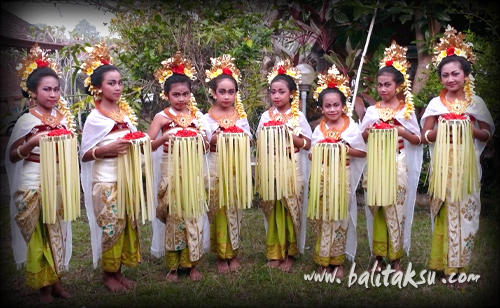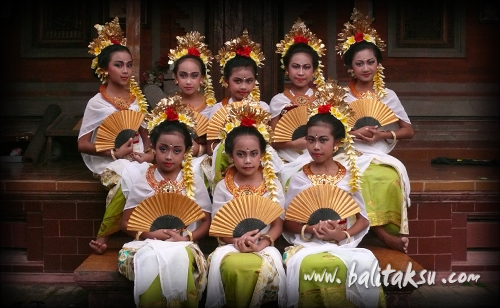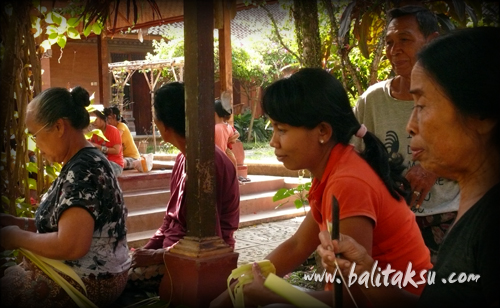
Tari Don Dapdape
“Don Dapdape”, a Balinese folk song, is very popular among the people of Bali. We performed this song as the opening section of the performances of Banjar Kalah community (Film & Parodi – The Legend of Roro Jonggrang) in Peliatan Festival, August 14, 2011.
Tari Don Dapdape 1st performance
-
dancers : Tunas MARAGAWI banjar kalah, peliatan, ubud
choreography : mayumi inouye ( m )
vocal : mareta dewi
keyboard : kadek ferry ( f ) -
song lyric:(anonymous)
Don dapdape, don dapdape lumlum gading
Don dapdape, don dapdape lumlum gading
Panak, panak biyu, panak biyu di KedatonTityang nembe, tityang nembe tuwun megending
Tityang nembe, tityang nembe tuwun megending
Anak, anak liu, anak liu rauh manonton
Ngiring mangkin, ngiring mangkin masukarena
Ampura ugi para semeton sareng samiJangi janger arasijang jangi janger
Don Dapdape staged in the form of a single vocal and a welcome dance. Danced by 8 children from Banjar Kalah in keyboard accompaniment with a song and arrangement versions of Puspa Dewi, which order back to be used as a simple accompaniment of the opening dance (welcome dance).
This dance choreographed by mayumi inouye, adapted from the basic movements of classical dance, Rerejangan (Rejang), with a modified costume creations in color of white-gold-red and light green.
The dance properties that are used are the folding fan and sampian (kind of offering made of young coconut leaves and flowers put on bowl). The folding fan is a Japanese folding fan-like, which we reset and re-painted with a golden color (prada). And the sampian (also called sempyur) is made simpler, with a smaller diameter and the strands of leaf three times longer than ordinary sampian size, with red flowers.

Tari Don Dapdape
Gratitude and our thanks to all involved, as well as the mothers who helped prepare the make-up, dressed, and making sempyur. Also to Banjar Kalah and all citizens and villagers of Peliatan who took part appreciating of this staging.
This dance will be easily learned by children from both the kindergarten and elementary school, or who have only basic skills of dancing Rejang, because the choreography on the dance movements are relatively easy and simple. Also from the accompaniment that only uses one type of musical instrument (keyboard), so it’s possible to be played in places that are not available a set of Balinese gamelan, outside the region, or even abroad.
Hopefully this work can be pleasing and can also be an alternative to attract the children starting to learn Balinese dance, as well as help provide a new style in the development of arts in Bali.
Matur Suksma!
(Thank You)
